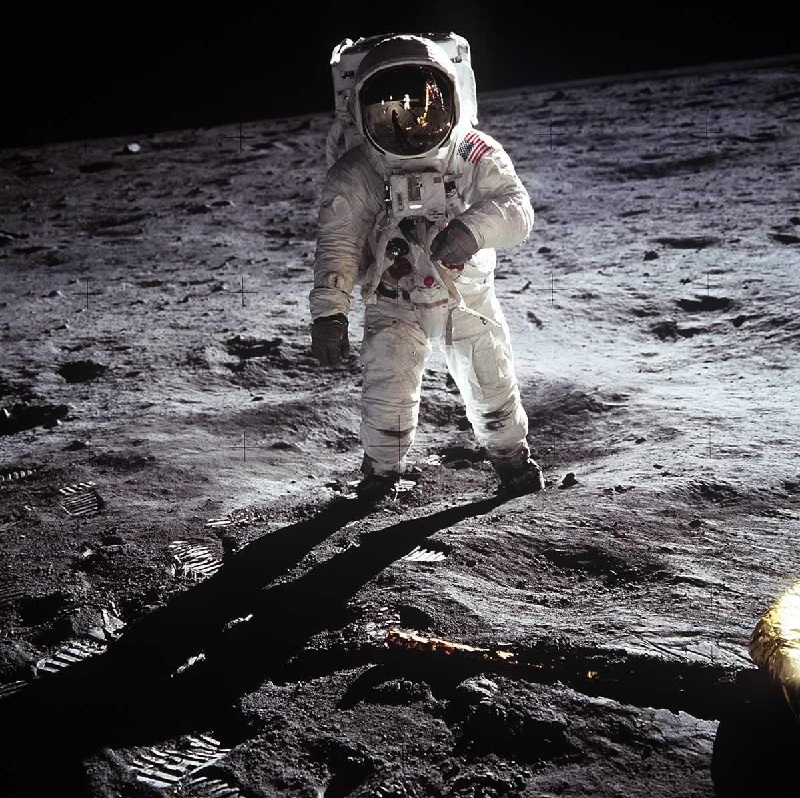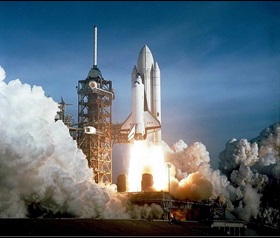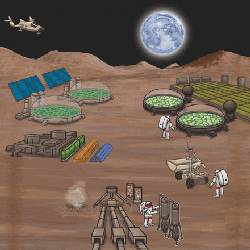We talk to Dr Amor Menezes about how synthetic biology will be used in future to reduce the cost of space travel

Space missions are expensive and technologies for aerospace travel are continuously evaluated for cost, relevance and safety. We chatted with Dr Amor Menezes and colleagues about their recent Review article – published in Journal of the Royal Society Interface – which looks at how current biological techniques and future progress in synthetic biology can improve existing and develop new technology for efficient space travel.
Why is synthetic biology in space important?
In the future, there will be manned long-duration space missions to the Moon or to an asteroid or to Mars. Synthetic biology has a good chance of providing substantial savings over current aerospace techniques to achieve this. We are arguing for experimental work in this new area to confirm our analysis.
Why did you choose this topic to review? Aerospace engineers don’t really utilize biological processes in their technologies, and bioengineers are more concerned with technology applications that are closer to home. This review came about as we attempted to bridge this divide when discussing synthetic biology in space.
What role does synthetic biology currently have in space science?
It is very much a novel idea with a relatively limited current role in space science. But efforts to explore and advance the field of space synthetic biology are already underway; there is the recent synthetic biology initiative at NASA Ames Research Centre, for example. One goal of our paper is to advocate for an expanded role for synthetic biology in space science, with a view towards future mission deployment.
What are the target areas for development, and why?
We look at four target areas: fuel generation, food production, biopolymer synthesis, and pharmaceutical manufacture. We chose those areas to showcase the versatile potential of space synthetic biology, and also because advances in those areas can significantly impact long-duration space missions: fuel is required for transport, food is necessary for sustenance, biopolymers can be used as construction materials (made by 3-D printing, for example), and therapeutics are essential because drugs expire faster in space than on Earth.
How is synthetic biology improving rocket fuel?

It makes sense to generate some of the necessary fuel in space rather than to take it all with us because of how expensive it is to launch that mass initially. The current thinking is to generate a methane-oxygen fuel blend on Mars for the return trip by making use of available carbon dioxide. Lately, another fuel blend has also been gaining attention for its safety and efficacy; it blends nitrous oxide with some hydrocarbons (but it’s not quite clear yet how this blend would be generated in space). Synthetic biology can do two things here: help increases in savings if a methane-oxygen fuel blend is chosen, or make the generation of a nitrous oxide-hydrocarbon fuel blend more efficient.
Why do drugs expire faster in space than on Earth? How would synthetic biology improving shelf life?
The faster expiry is due to space radiation which can reduce the acceptability of solid drug formulations by up to three-quarters, so the ability to manufacture drugs in space in near real-time is very important. The current thinking is that drugs and other supplies will have to be shipped on an as-needed basis to astronauts in a medical emergency, which is very expensive, and could also endanger astronauts if the supplies do not arrive in time. Synthetic biology drug manufacture is a viable alternative to using traditional drug production means in space and also reduces the need for emergency shipments.
What’s the most important synthetic biology product for space?
This question is hard to answer. The competing technologies are still new and changing, and a long-duration manned mission is still a long way off. We found that the most mass savings exist where we substitute the shipped feedstock required to 3-D print a lunar or Martian habitat with the shipped mass required to biologically produce the feedstock on location. But 3-D printing in space is still new and untested, and printer feedstock manufacture for this purpose has yet to be truly analyzed. Perhaps the most compelling space synthetic biology targets are those pharmaceuticals that assist astronauts in emergencies, but of course, we need to test synthetic biology performance in space first, and Earth-based testing in a simulated space environment is required before that.

How will future missions be different as a result of this technology?
Space synthetic biology is truly ground-breaking. Abiotic technologies were developed for decades before they were successfully utilized in space, and biological technologies like synthetic biology are only now seeing development efforts. Of course, these technologies have some catching-up to do, but it turns out that they may not be too far behind, and in some cases, the technologies may already be superior to their abiotic counterparts.

